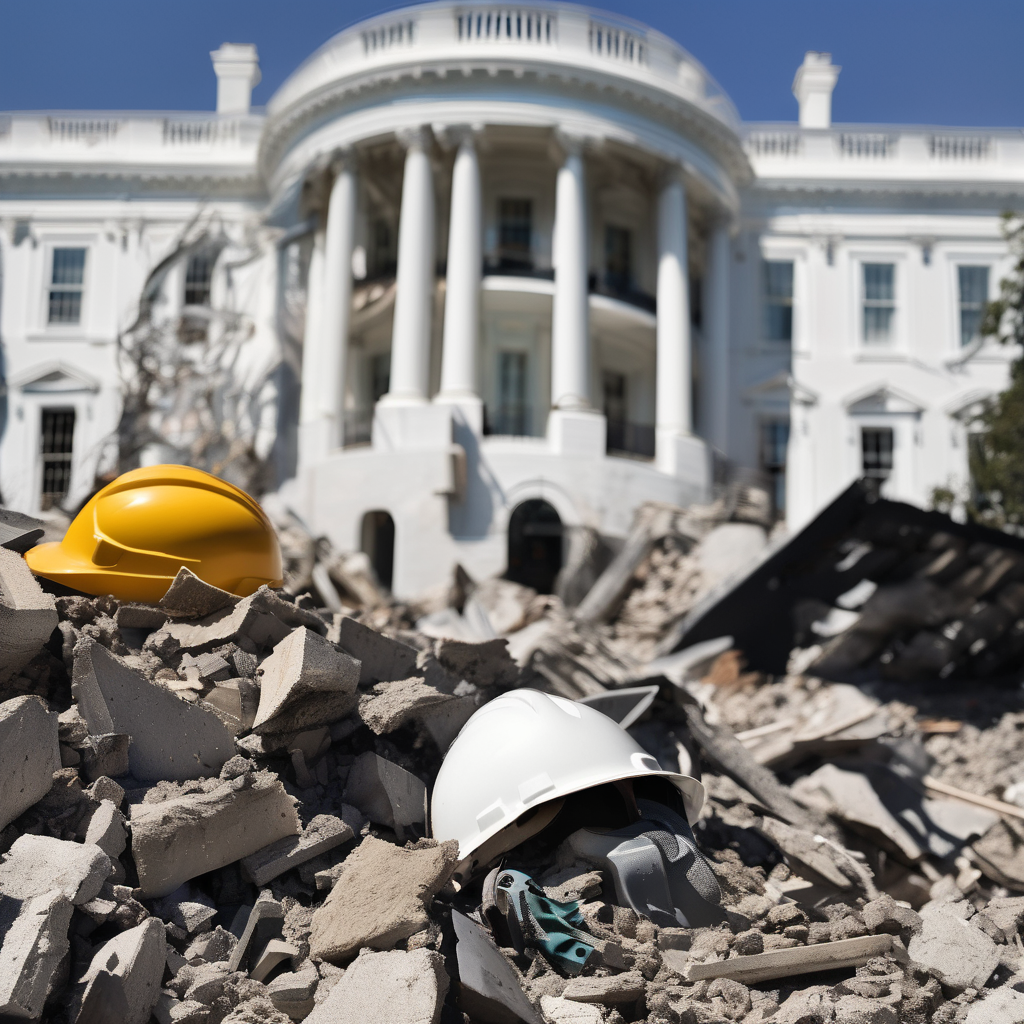The East Wing of the White House has been completely demolished as part of a controversial plan initiated by President Donald Trump to construct a grand ballroom measuring 90,000 square feet. This rapid teardown was carried out in just three days, prompting criticism from historic preservationists and Democrats who argue that the president is endangering a national landmark without adequate transparency.
Thousands of tourists flocked to Pennsylvania Avenue this week, eager to witness the demolition firsthand, though access points were heavily restricted by the administration. Employees of the nearby Treasury Department were reportedly instructed against sharing images of the activity, while journalists were escorted away from the site.
The remnants of the East Wing after the demolition included a portion of the East Colonnade, which had previously served as a corridor linking the East Wing to the main White House building. Photos revealed a scene of devastation, with opening walls showcasing damaged brick and exposed wires amid machinery noise.
The new ballroom, along with offices for the first lady and her staff, is part of a project designed under the guidance of lead architect James McCrery II. While White House officials stated the East Wing will undergo a “modernized and rebuilt” phase, specifics regarding the inclusion of the new offices and guest suites within the ballroom’s expansive footprint remain unclear.
The ongoing demolition serves as a backdrop to the White House’s claims of transparency in the project, even as details about the ballroom’s cost, capacity, and scope have shifted. Initial estimates indicated a $200 million budget with a capacity for 650 guests, which have now ballooned to $300 million and nearly 1,000 guests, respectively. Press Secretary Karoline Leavitt defended these changes by claiming necessary adjustments were made based on architectural advice.
Trump mentioned that private donors have contributed around $350 million to the project, including prominent entities like Apple, Amazon, and Google, with his personal contributions amounting to millions more. He expressed his commitment to ensuring the project is fully funded.
The East Wing has a rich history, originating back to Thomas Jefferson’s era, and underwent significant changes during the Theodore Roosevelt administration. For many visitors, it has been a gateway to the White House experience, embodying elements of America’s political legacy.
Critics, including Rep. Chellie Pingree, have articulated their concerns about the haste of the demolition and the potential erasure of historical significance. Polls indicate that a substantial majority of Americans oppose the redevelopment of the East Wing, showing a clear divide over the future of this venerable national site.
As the project moves forward, it continues to evoke mixed feelings. While some see the ballroom as a valuable enhancement for presidential events, many feel that the loss of the East Wing marks a troubling shift in the stewardship of the “People’s House.” As discussions about the renovation proceed, the hope remains that a balance between modernization and historical preservation can be struck, allowing future generations to enjoy the White House’s rich legacy alongside its new developments.
